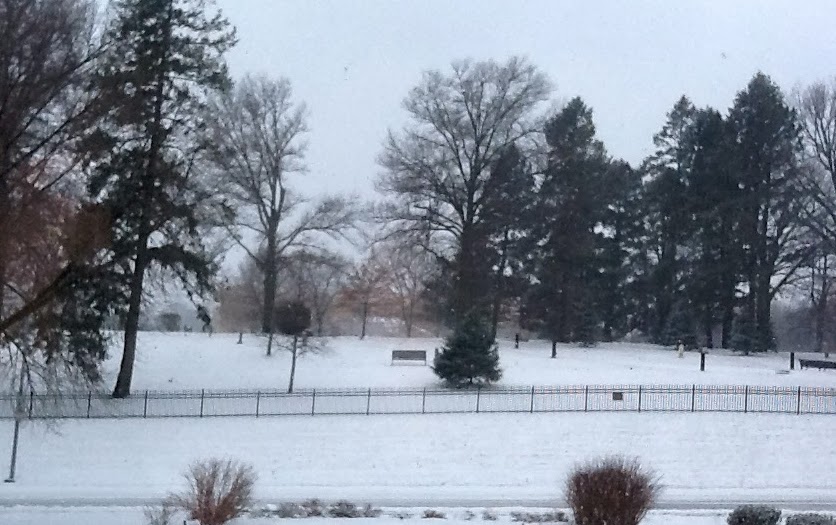I remember well our first visit to Winter Quarters. It was
a part of a two-week, fifteen-state road trip to deliver a daughter to school
in North Carolina. My journal entry for Saturday, July 24, 1993, recorded the
event:
Today is Pioneer Day, a state
holiday in Utah celebrating the 1847 arrival of the Mormon pioneers into the
Salt Lake Valley. Appropriately, having spent much of the night more or less following
in reverse the route of the Mormon Pioneer Trail across Nebraska, we arrived at
Winter Quarters before breakfast and just after the night’s rains stopped and
the skies cleared. We were here to visit the pioneer cemetery and visitors’
center at Winter Quarters. By evening we would reach Nauvoo, Illinois, where
the pioneer trek originally began.
Winter Quarters was a temporary
settlement built on Indian lands on the west bank of the Missouri River. The
town site was surveyed in October 1846 and laid out in a grid with streets and
blocks and individual lots. The houses ranged from two-story log homes to sod
huts. Most were single-story log cabins. The settlement housed almost 4,000 Latter-day
Saints by December 1846.
Upon orders from government
officials concerned about settlement on Indian lands, the Saints vacated Winter
Quarters in 1848 to go either to the Salt Lake Valley or back east across the river.
On January 14, 1847, President
Brigham Young received at Winter Quarters the revelation now published as
section 136 of the Doctrine and Covenants, which contained “the Word and Will
of the Lord concerning the Camp of Israel in their journeyings to the West”
(D&C 136:1).
There was a peaceful, sacred
feeling in the lovely little hillside cemetery where many of the pioneers were
laid to rest. Historians tell us that some 2,000 Latter-day Saints died near
these settlements on both sides of the river between June 1846 and October 1848—with
still more on the pioneer trail as it snaked its way west from here. What a
terrible price was paid for the legacy of faith that we now so comfortably
enjoy!
Ten-year-old Eliza wrote of our
visit to Winter Quarters: “We went to this place. We saw a 20-minute video,
then we went to a grave yard. It was weird! They listed all the names of people
who died and were buried there. There were two Elizas. One was 3 years old and
the other 27 years old. We saw a wagon and a handcart and a log cabin. (Oh,
this was all in Nebraska.)”
Sixteen-year-old Talmage added, “We
went to Winter Quarters and saw a little cabin, wagon, and handcart. More
importantly, we saw the memorial for all the people who died at Winter Quarters
for their faith. It was heart touching. We also saw a 20-minute film about
Winter Quarters and the Mormon pioneers.”
After we finished breakfast on
the picnic tables at the visitors’ center, we got back on Interstate 680 and
immediately crossed the Mormon Bridge over the Missouri River and entered Iowa.
In nearby Council Bluffs, on the Iowa side of the river, there had also been
pioneer settlements during the early years of the exodus to Utah, home to
another 8,000 or more Saints. It was in this area that the Mormon Battalion
left in 1846 on its historic trek to Santa Fe and San Diego and the First
Presidency was reorganized in December 1847 with Brigham Young as the second
President of The Church of Jesus Christ of Latter-day Saints.

No comments:
Post a Comment